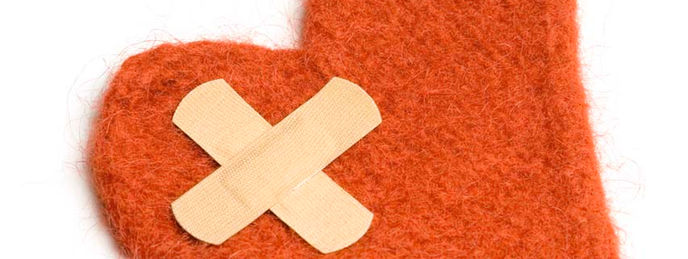
Your partner in health and wellness at sea and on land
EFA Training | Elementary First Aid | PDF Training Material | Free
Learn Basic First aid Online
Basic First aid is the immediate care given to the victim of an accident or sudden illness before the arrival of a qualified expert. The purpose of First-aid is to preserve life, assist recovery, prevent aggravation and minimize complications at a later date with the help of such material as may be available.
FRACTURES
மலேரியா ஒட்டுண்ணியை கண்டறிவதற்கான புற ஸ்மியர்
Loss of Power, Deformity
Do not move the injured unless the life is
endangered from other causes.
Deal with the haemorrhage and breathing
IgM, ஆன்டிபாடி சோதனை
IgM கண்டறிதல் சோதனை
விரைவான சோதனை
IgM, ஆன்டிபாடி சோதனை
ஆன்டிஜென் அடிப்படையிலான சோதனை
EFA Training
பல்கலைக்கழகத்தின் பெயர்
Solid – Do not try to remove, scratch or
probe it.
Insects – Put a few drops of water in the ear
and turn the head so that affected ear points
upwards.
Keep the head in that position for 5 minutes,
then turn the head downwards so that the
water flows out.
Arrange immediate medical aid
EFA Training
INSECT BITE
The sting bite should be pulled out.
Apply cold compression.
Apply vinegar diluted with water.
Soda-bicarbonate paste should be applied at
the site.
Prevent shock.
Send for medial aid immediately.
EFA Training
BLEEDING NOSE
Make the patient sit on a Chair with head
downward.
Pinch the nose with fingers and thumb.
Apply ice or cold compression.
Do not plug the nostrils.
Do not put water or any medicine through
the nostrils.
Send for medical aid immediately.
EFA Training
தேடல் முடிவுகள்
Remove the patient from the source
Clean the airways.
Restore breathing by artificial respiration.
Send the patient to the hospital.
EFA Training
CHEMICAL BURNS OF THE EYES
Immediate washing of the eye with clean
water at least for fifteen minute or longer.
Apply sterile dressing over the eye.
Neutralising agents or ointments should not
be used.
Send the patient to the hospital.
EFA Training
ABDOMINAL WOUNDS
No time should be lost in sending the patient
to the hospital.
Keep the patient flat on his back.
Give nothing by mouth.
Maintain warmth.
If intestines protrude from the wound, do not
attempt to touch or replace them.
Apply sterile dressing and binder on the
wound.
Provide immediate transportation to the
hospital.
EFA Training
SNAKE BITE
Reassure the patient
Do not allow the person to run or walk
Apply a ligature above the wound (in
between the heart and the wound) if the bite
is in the leg or hand.
Wash the wound with potassium
permanganate solution or with soap and
water.
Allow free bleeding.
Never suck the blood from the wound.
Treat for shock.
Arrange immediate hospitalization, by
transporting the patient in a lying down
position.
EFA Training
BLEADING EAR
Lay the patient with the head slightly raised.
Incline the head to the affected side and
apply a dry dressing over the ear with loose
bandage.
Do not plug the ear.
Apply pressure in front of the ear.
Send for medical aid immediately.
EFA Training
WOUNDS
Stop the bleeding, if any.
Avoid touching the wounds.
Cover the wound with sterilized cloth.
Arrange immediate medical aid.
EFA Training
POISONING
Find the nature of the poison
Give universal antidote mixture as given
below to drink:
Charcoal powder - 2 table spoons
Coffee powder - 2 table spoons
Chalk powder - 1 table spoon
Add it to a glass of warm water and mix well.
Send the patient immediately to the hospital.
EFA Training
CHEMICAL BURNS OF THE EYES
எங்கள் இடம்
water at least for fifteen minute or longer.
Apply sterile dressing over the eye.
Neutralising agents or ointments should not
Send the patient to the hospital.
EFA Training
BACKBONE FRACTURE
Fracture of backbone may lead to paralysis
of limbs. Hence, victim should be handled
with great care.
Transport on a rigid frame, which may be
improvised by using available board.
The rigid frame is to be placed on a stretcher
for transportation.
Immediate hospitalization is needed.
EFA Training
HEAT STROKE
Make the patient lie down.
Remove all clothings except the underwear.
Keep the patient under the fan.
Pour cold water on the body repeatedly.
Wash the head thoroughly with cold water
and dry it with towel.
Record body temperature falls up to 38ºC
stop pouring water.
Give plenty of cold water with a pinch of
common salt in each glass of water to drink.
Send the patient to the hospital.
EFA Training
DOG BITE
Clean the wound immediately with water.
Then wash with antiseptic soap and water.
Do not try to stop bleeding.
Do not cover the wound.
Send the patient to hospital for treatment.
EFA Training
EYE INJURIES
Removal of foreign body should not be
attempted.
Do not apply oil or ointment.
Apply sterile pad and loose bandage.
Send the patient to the hospital.
EFA Training
SHOCK
Lay the patient on his back.
Stop bleeding, if any.
Relieve pain by supporting the injured part.
Keep the patient comfortable.
Do not cause sweating.
Fluids may be given by mouth in small
amounts, if the patient is conscious.
Reassure the patient.
Arrange immediate medical aid.
EFA Training
ELECTRIC SHOCK / INJURIES
Do not touch the casualty while he is still in
contact with electricity.
Switch off the current at once.
Do not attempt first aid until the contact has
been broken.
Make the air passage clear and clean.
Restore breathing Artificial respiration and
external cardiac massage, if needed.
Call for immediate medical aid.
Send the patient to the hospital.
EFA Training
UNCONSCIOUSNESS
Make the patient lie down on his belly with
head turned to one side.
Check breathing and pulse.
Loosen tight clothings.
Clean the air-way.
Give artificial respiration and external
Cardiac Massage, if needed.
Transport the patient to the hospital
CONTROL OF BLEEDING
Apply direct pressure by thumb or finger.
Apply dressing – gauze pad and bandage.
Apply indirect pressure on pressure points.
Apply tourniquet.
Remove the injured to the hospital.
Dr Kingson
Mouth to Mouth: This is appropriate and
effective technique for emergency artificial
respiration.
Keep the head slightly backward and open
the jaw.
Seal the casualty’s nose to prevent escape
of air by pinching with thumb and index
finger.
Take a deep breath, open your mouth
widely, place it over the victim’s mouth and
make a tight seal.
Quickly blow the full breath into the mouth of
victim.
Remove your mouth from the victim and
allow him to exhale passively.
Repeat the procedure 12 to 15 times per
minute, till medical aid is arranged.
Arrange immediate medical aid.
உங்கள் ஆரோக்கியத்தை கவனித்துக்கொள்வது
Do not give mouth to mouth resuscitation
during CPR in the presence of toxins such
as cyanide, hydrogen sulphide, corrosives
and organo-phosphates. Ventilate the
casualty by using a face mask or
bag/valve/mask assembly.
Avoid mouth to mouth resuscitation if there
is possibility of transmission of infection
between the victim and the rescuer, such as
HIV, Hepatitis-B, Tuberculosis, Shigellosis,
Meningococcal meningitis, Herpes simplex
virus and Salmonella. Use an interpositional
airway device which must function effectively
in both its resuscitation and protective roles,
and be immediately available at all times.
நீரிழிவு நோயைக் கட்டுப்படுத்தும் சிகிச்சை., உயர் இரத்த அழுத்தம், இதய நோய்
Place the person on their back and open their airways
Place the person carefully on their back and kneel beside their chest. Tilt their head back slightly by lifting their chin.
Open their mouth and check for any obstruction, such as food or vomit. Remove any obstruction if it is loose. If it is not loose, trying to grasp it may push it farther into the airway.
அனைத்து வகையான தனிப்பட்ட உடல்நலப் பிரச்சினைகளுக்கும் ஆலோசனை வழங்குதல், விரைவில் பிரச்சனைகளைக் கண்டறிந்து கண்டறிதல்
Check for breathing
Place your ear next the person’s mouth and listen for no more than 10 seconds. If you do not hear breathing, or you only hear occasional gasps, begin CPR.
If someone is unconscious but still breathing, do not perform CPR. Instead, if they do not seem to have a spinal injury, place them in the recovery position. Keep monitoring their breathing and perform CPR if they stop breathing.
அதிர்ச்சி மேலாண்மை
பார்வை
Step 1. Perform 30 chest compressions
Place one of your hands on top of the other and clasp them together. With the heel of the hands and straight elbows, push hard and fast in the center of the chest, slightly below the nipples.
Push at least 2 inches deep. Compress their chest at a rate of least 100 times per minute. Let the chest rise fully between compressions.
Step 2. Perform two rescue breaths
Making sure their mouth is clear, tilt their head back slightly and lift their chin. Pinch their nose shut, place your mouth fully over theirs, and blow to make their chest rise.
If their chest does not rise with the first breath, retilt their head. If their chest still does not rise with a second breath, the person might be choking.
Step 3. Repeat
Repeat the cycle of 30 chest compressions and two rescue breaths until the person starts breathing or help arrives. If an AED arrives, carry on performing CPR until the machine is set up and ready to use.
De Fibrillation
If the Person is still in unconsious state, Avail AED device and give successful defibrillation.
மருத்துவ மையம் பற்றி
Step 1. Call for Support First, check the scene for factors that could put you in danger, such as traffic, fire, or falling masonry. Next, check the person. Do they need help? Tap their shoulder and shout, “Are you OK?” If they are not responding, call emergency number or ask a bystander to call emergency number before performing CPR. If possible, ask a bystander to go and search for an AED machine. People can find these in offices and many other public buildings.




